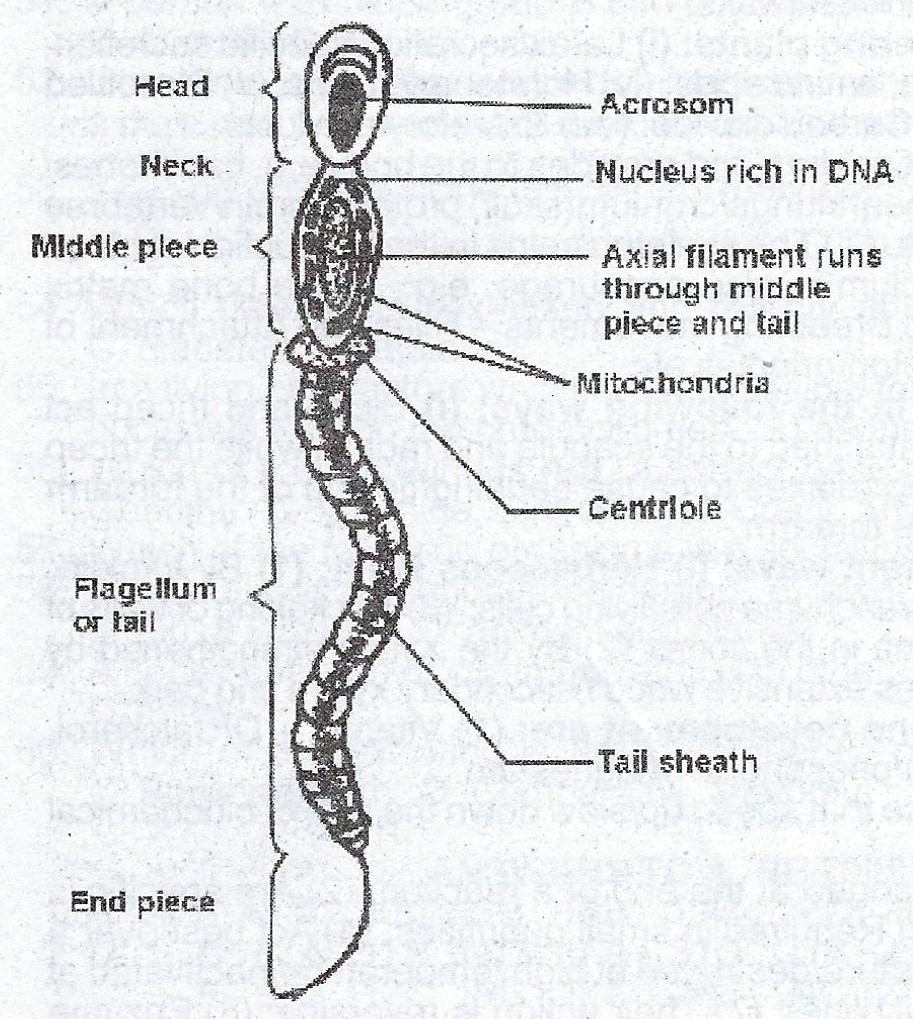(a) (i) Define asexual reproduction.
(ii) Name two types of asexual reproduction which occur in animals giving one example in each case.
(b) In a tabular form outline four differences between sexual and asexual reproduction.
(c) Make a large, labelled diagram 8 – 10cm long of the human spermatozoon to show its structure.
(d) State one function each of any three organelles found in the spermatozoon.
Explanation
(a)(i) Definition of asexual reproduction: Asexual reproduction is the production of a new individual from a parent / organism / order individual, without fertilization / gametes / change in chromosome number/genetic constitution; it involves, a single parent.
(ii) Types of asexual reproduction in animals Types Example;
| Types | Example |
|
(1) Binary fission |
Amoeba, Paramecium |
(b) Differences between asexual and sexual reproduction Asexual reproduction
| Asexual reproduction | Sexual reproduction |
|
(1) One parent involved |
Two parents involved |
(c)

(d) Function of organelles;
- Acrosome - contains enzymes / lytic agents that help to digest the cell membrane of the female ovum during fertilization.
- Nucleus; contains haploid number of chromosomes / genetic materials / DNA
- Mitochondria; contain respiratory enzymes / for respiration that provide energy / site for production of energy for locomotion/ movement.

